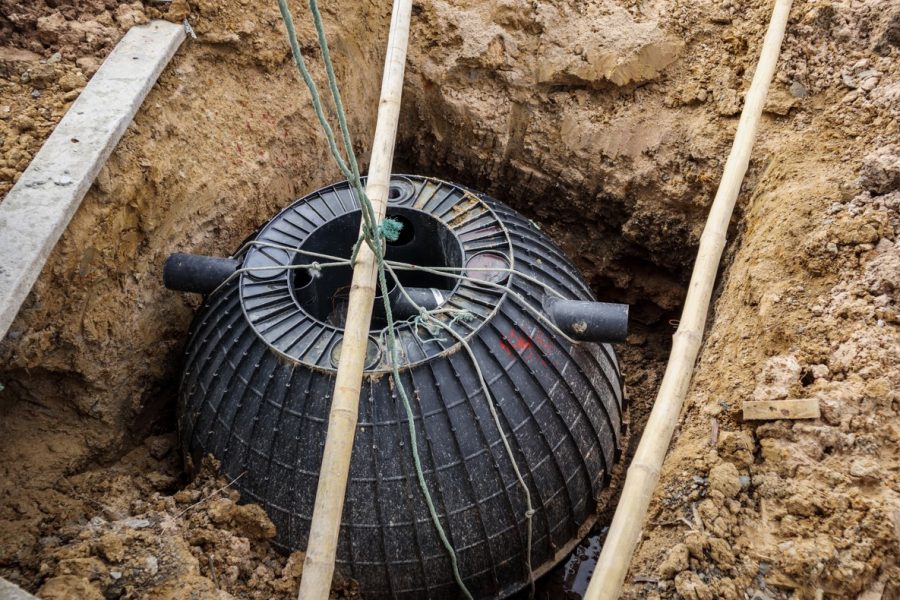Septic tanks are an integral part of every home, but most people don’t know the dos and don’ts of maintaining one. This is especially the case for those who have just purchased a home with a septic tank and haven’t used a septic tank in the past. When using a septic tank, there are some things you should do and some things you shouldn’t do to ensure your tank lasts as long as possible and works at optimal capacity. Read the following list to learn what to do and what not to do when using a septic tank:
Septic Tank “Do’s”
Do purchase a septic tank that supports the number of bathrooms you have in addition to the amount of use you plan on putting into it. Knowing what to do to ensure proper use of your septic tank can save you the hassle of having something go wrong.
Do know that your septic system should only be used to take away toilet waste and that toilet paper is the only product that should go down your toilet. Many homeowners have a sealing trashcan similar to the trash cans used for diapers next to their toilet so things like tampons and pads can be disposed of properly without making a mess or causing an odor in the bathroom. That being said, if you are planning to rent out your home, you may want to consider some sort of double strength bags to prevent tares and make taking out the nasty trash a little bit easier.
Homeowners should have an entirely separate system from the septic tank called a leach field. A leach field is for greywater or wastewater from the kitchen sink or bathtub. That way you aren’t wasting toilet waste space with greywater. Additionally, the size of your septic tank should be considered.
Do hire a professional for septic tank maintenance. The effectiveness of your septic system depends on your regular septic tank maintenance. You should have your tank pumped out every three years. This can be done by any licensed contractor in your area that services septic systems or by hiring an independent septic service company to do it for you. Scheduling regular maintenance will keep you from spending hundreds of dollars on expensive repairs and replacements later on.
Do keep the area around the system grassed. Grass will help promote evaporation and it will help prevent erosion, which is key to a long-lasting septic tank system. You should also look for where natural water settlement might direct water into the drain field.
Do lower the amount of water used to flush your toilet. With each flush of the toilet, water will enter your septic tank. If you do not limit the amount of water that is dispensed during each flush cycle, you may find that your septic tank reaches max capacity very quickly. This will mean that you will need to arrange for more frequent visits by a sanitation contractor who will empty the tank on your behalf.
Not only can this be costly, but the weight of excess water can also cause a lot of excess strain on the fabric of the metal tank. You can reduce the amount of water contained in every flush by placing a brick in the toilet cistern. This will displace some of the water, resulting in a lower volume flush. Doing this will also help to cut your water bill.
Do have the tank inspected and cleaned. You should periodically have the septic tank inspected by a contractor from a septic tank servicing company. The contractor will check for any signs of damage and will drain and flush the tank to ensure that no debris has built up inside it.
Septic Tank “Don’ts”
Though many people assume that wet wipes are safe for their septic system, they contain additives that can damage a septic system over time. These additives include materials that break down fats and oils in wastewater, causing them to settle at the bottom of sewage lines instead of floating on top where they belong. This causes clogs within your pipes which can cause backups or overflow into yards or streets.
Another septic tank “don’t” is to avoid flushing facial products like creams or moisturizers. These products are designed to retain moisture in skin cells that will overload your drain field and damage your septic tank. Even feminine products like tampons and pads should be disposed of in a protected waste bin bag and not disposed of in the septic tank.
Don’t expand the size of your home without expanding your plumbing system. Don’t attempt to install or repair your septic system without a licensed and registered Onsite Wastewater Practitioner or qualified professional.
Though growing grass around the system is ideal for the septic system, trees and shrubs should not be planted around the system. The roots can damage the plumbing and clog pipes. Don’t install automatic lawn sprinklers in the area as well. Don’t allow your vehicles to drive over the drain field or park on it. Additionally, don’t build over or cover the drain field. And hard surfaces such as asphalt, brick, or patio stones can cause issues with draining.
While modern septic systems are safe and effective, there are some things you should and shouldn’t do when using them. Following these tips can help you get the most out of your system and avoid any septic tank issues in the future.

